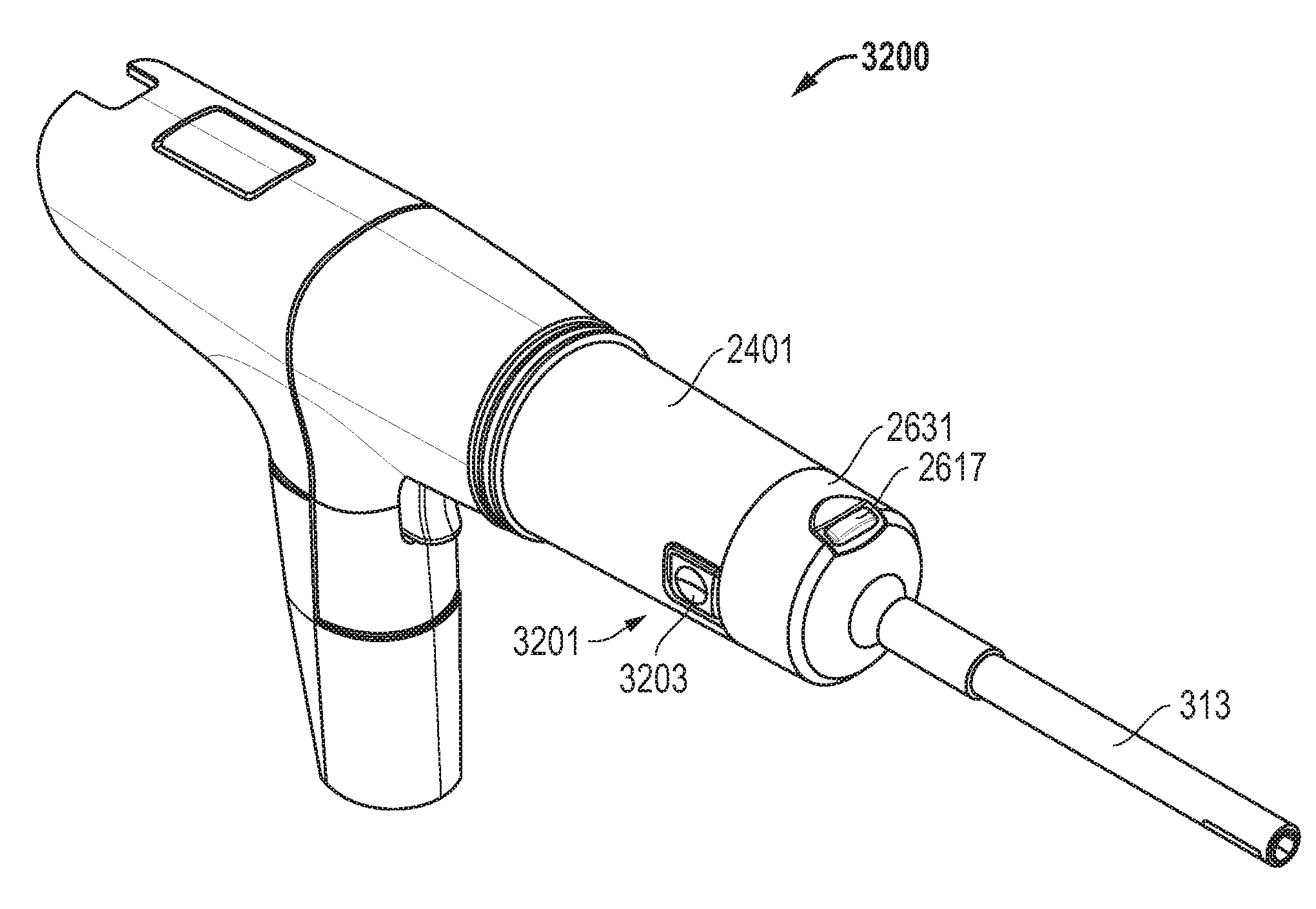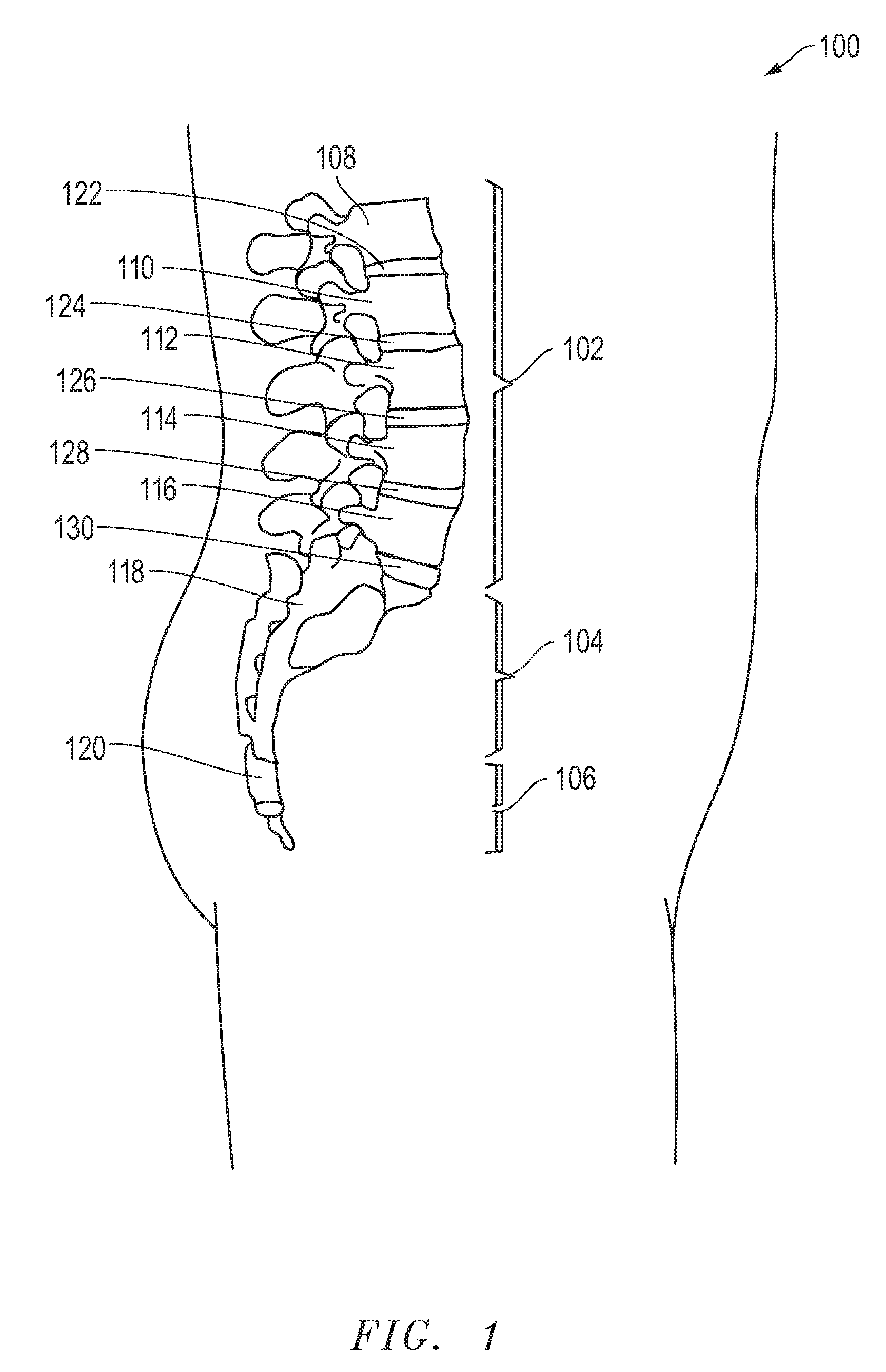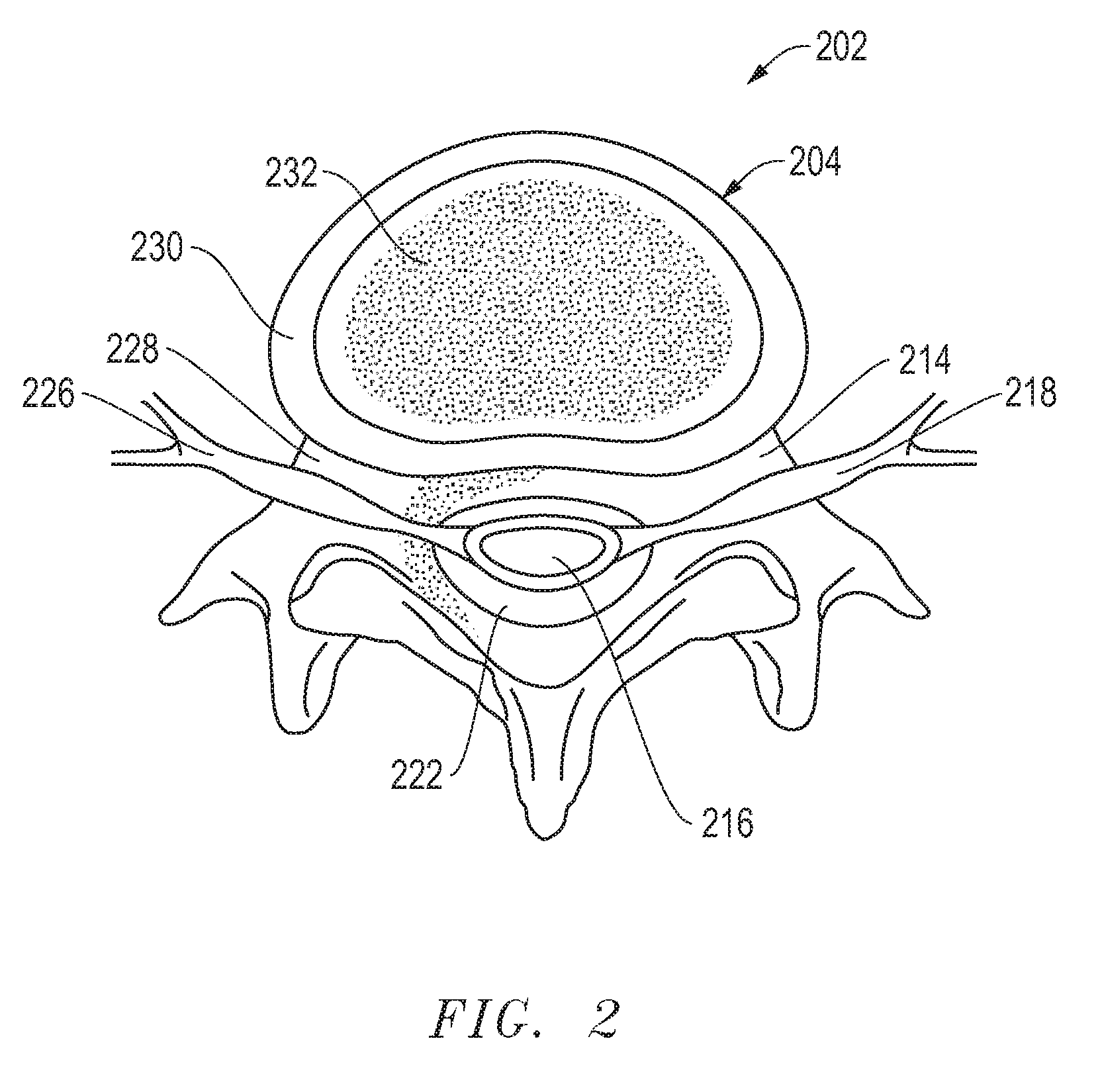Surgical Tool
a surgical tool and tool body technology, applied in the field of surgical tools, can solve the problems of reducing the ability affecting the integrity of the implanted object, and causing the patient to be jarred
- Summary
- Abstract
- Description
- Claims
- Application Information
AI Technical Summary
Benefits of technology
Problems solved by technology
Method used
Image
Examples
Embodiment Construction
Description of Relevant Anatomy
[0039]Referring initially to FIG. 1, a portion of a vertebral column, designated 100, is shown. As depicted, the vertebral column 100 includes a lumbar region 102, a sacral region 104, and a coccygeal region 106. The vertebral column 100 also includes a cervical region and a thoracic region. For clarity and ease of discussion, the cervical region and the thoracic region are not illustrated.
[0040]As illustrated in FIG. 1, the lumbar region 102 includes a first lumbar vertebra 108, a second lumbar vertebra 110, a third lumbar vertebra 112, a fourth lumbar vertebra 114, and a fifth lumbar vertebra 116. The sacral region 104 includes a sacrum 118. Further, the coccygeal region 106 includes a coccyx 120.
[0041]As depicted in FIG. 1, a first intervertebral lumbar disc 122 is disposed between the first lumbar vertebra 108 and the second lumbar vertebra 110. A second intervertebral lumbar disc 124 is disposed between the second lumbar vertebra 110 and the third...
PUM
 Login to View More
Login to View More Abstract
Description
Claims
Application Information
 Login to View More
Login to View More - R&D
- Intellectual Property
- Life Sciences
- Materials
- Tech Scout
- Unparalleled Data Quality
- Higher Quality Content
- 60% Fewer Hallucinations
Browse by: Latest US Patents, China's latest patents, Technical Efficacy Thesaurus, Application Domain, Technology Topic, Popular Technical Reports.
© 2025 PatSnap. All rights reserved.Legal|Privacy policy|Modern Slavery Act Transparency Statement|Sitemap|About US| Contact US: help@patsnap.com



